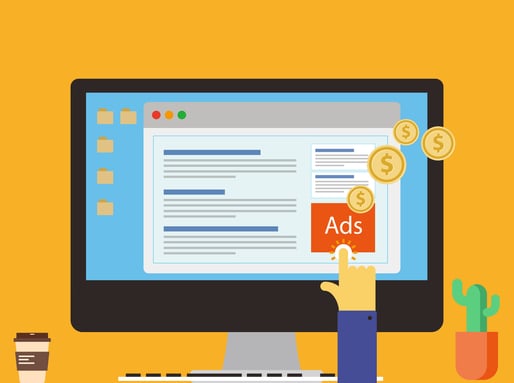
Did you know that Google gets anywhere from 3.6 billion to 6.5 billion searches per day? And of all these searches, how many people do you think look past the first page of results?
If your answer was “not a lot,” then you’re right. On average, only around 25% of searchers will travel beyond the first page of results. Knowing this information, you can understand why it’s important to get the most out of your Google ads.
Knowing how to use Google Ads effectively is how you drive high-quality traffic to your site consistently. It’s also a great way to begin drawing attention to your brand.
How to Use Google Ads Effectively
Google Ads can be used to:
- Target users the moment they make their search
- Target users across thousands of websites and apps
- Retarget users who have visited your site before
- Target users before they even make their first search
Google ads is Google’s version of PPC, and allows businesses to bid on the chance to show on an ad for specific search results.
Before we dive any further, let’s take a closer look at PPC and why it’s so useful.
Overview of PPC
PPC, which stands for pay-per-click advertising, is an online advertising model designed to increase web traffic to a site through targeted paid ads. These ads come at no cost to you until someone clicks the ad.
And these pay-per-click services offered by Google ads can also be displayed across a wide range of different networks, including:
- Google Search Network
- Google Display Network
- Mobile ads
- Google websites and properties (Gmail, YouTube)
- Google Shopping
What Kind of Ads Should You Run?
Google offers all kinds of ads, and we could spend all day going through them. For the sake of time, we’re going to discuss two of the more relevant ones. These include:
- Search ads
- Display ads
Let’s take a closer look at how these two types of ads work.
How Do Search Ads Work?
Search ads show up on Google search engine results pages (SERPs). These ads are text-based and closely resemble the organic results that come up as a result of the search query. This makes them useful for targeting all stages of the sales funnel.
A search ad can only be as effective as its keywords, as they serve as the foundation for a good campaign. Make sure you get a good mix of both short-tail keywords (1-3 word phrases) and long-tail keywords (4+ word phrases).
You can choose to have search ads appear at the top of the results page, the bottom of the results page, or, if you’d like, at both the top and bottom, known as the “sandwich” method.
These search ads contain links, also called extensions, that are used to drive traffic to pages of your site beyond the intent of the search.
Landing pages are required for search ads, and they should always follow inbound marketing best practices. When creating a landing page for a search ad, ask questions like:
- Does your landing page answer the user's question?
- Does your landing page load quickly?
- Does the user have an opportunity to provide you with contact information?
- Are there actionable next steps for the user to follow or a link to another page
Using a dedicated PPC landing page is a great way to improve ad performance and create easy A/B testing. The ultimate goal of your landing page is to provide enough value (i.e. an e-book, newsletter signup, or consultation) to your potential customer that they’re willing to give you their contact information. This then allows your marketing and sales teams to reach out.
Landing page performance can vary from ad to ad. That’s why it’s best to use a PPC-dedicated landing page to track paid-search interactions. This will help you figure out what needs improved on the page. Even the smallest changes on a landing page can have a significant impact on lead acquisition.
How Do Display Ads Work?
Display ads are image-based ads that show across the Google Display Network. They can vary in size, layout, and configuration, and are designed to be more adaptive, responsive, and visually engaging.
The asset’s structure changes according to the searcher’s device, screen resolution, and website/app location. You can have hundreds of unique display ad combinations.
Possibly the best part about display ads is that you can target a specific audience type with AI and machine learning. This includes:
- Remarketing -- Reach users that have previously interacted with your business
- In-market -- Reach users with relevant purchase intent.
- Similar -- Reach new users with similar interests to your current site visitors and/or existing customers
- And several more
What’s Next?
Now that you have a general understanding of Google Ads, you may be wondering what’s next. If you’re ready to begin using Google Ads, then you’ll need to know how to measure success.
It’s imperative that you define what success looks like prior to starting out with Google Ads. To do this, it’s best to set SMART KPIs (key performance indicators) and goals from anything ranging from web traffic to conversions.
The acronym “SMART” stands for:
- Specific
- Measurable
- Achievable
- Realistic
- Timely
Lucky for you, your Google Ads account can also help you track your KPIs, such as:
- Tracked conversions
- Impressions and clicks
- Cost per acquisition (CPA)
- Phone calls
- Value per conversion
Campaigns can always improve, so set realistic KPI goals and don’t expect too much too soon. Try and put yourself into your target audience’s shoes and think of new ways to improve your campaigns.
If you’d like some bonus tips for managing your Google Ads, or would like to watch the video on-demand (and download the slides for free!), click below:
